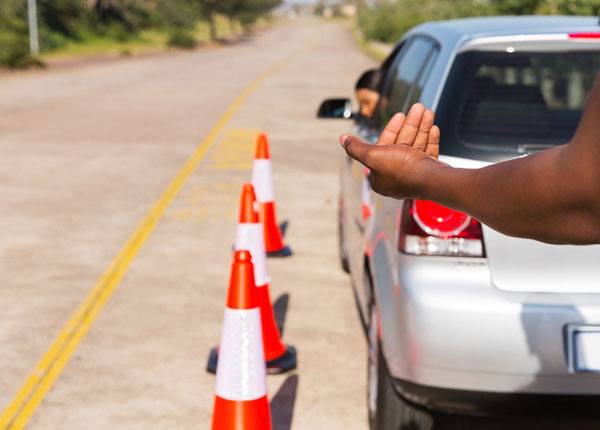
Backing Up Safely: How to Ace Reversing Maneuvers & Avoid Common Mistakes
Updated Oct. 26, 2020New drivers tend to feel extremely apprehensive about driving in reverse. Alongside parallel parking, backing up is one of the most dreaded maneuvers in the practical driving exam. This is simply because your vision while driving in reverse is so limited! Drivers must operate the steering wheel and pedals situated in front of them, while looking back to position the vehicle and check for obstacles. To further complicate matters, backing up is usually required in situations where you must maneuver the car quickly, making the whole experience more stressful. There is no need to be fearful about learning to drive in reverse as with enough practice it will become just as effortless as driving forward – millions of drivers do it every day without incident. You should start learning to back up as soon as possible, using the step-by-step guide laid out below.
Step-by-step instructions
- 1

In accordance with your pre-drive checklist, preparing to back-up your car begins outside the vehicle. Check for children, animals and small objects behind the vehicle which may not be visible from the driver’s seat.
- 2

Next, place your hand in the 12 o’clock position on the steering wheel.
- 3

Put your foot on the brake pedal and shift the car into reverse. While still pressing down on the brake pedal, you may release the parking brake.
- 4

Turn to look over your right shoulder, placing your right hand on the back of the adjacent passenger seat to steady yourself. Check your rear-view mirror and glance over your left shoulder to check the side-view mirror.
- 5

Gradually, release the brake pedal. You will begin to move backward slowly. Keep the brake pedal covered and do not hit the accelerator.
- 6

Continue to back-up slowly, while adjusting the steering wheel as necessary to maneuver the vehicle. When driving in reverse, you must turn the steering wheel in the direction you need the rear wheels to go.
- 7

Only accelerate if the situation demands that you reverse quickly. Apply pressure to the gas pedal cautiously.
- 8

Press the brakes to stop your vehicle when the maneuver is complete.
Common mistakes while driving in reverse
Here are some of the most common errors that drivers make while backing up a vehicle. Making any of these mistakes in a general driving situation will leave you more at risk of an accident. During a practical driving test, they may well cost you a driver’s license.
- 1

Relying solely on mirrors when backing up. Drivers of all ages and experience levels make this mistake; it is the most common by far. The view you see through your mirrors does not accurately convey the environment around the rear of your vehicle. Plus, it is incredibly hard to judge distances correctly while looking at a reflected image. Drivers must always turn and look over their shoulders when reversing a car, to get a true picture of their surroundings. Mirrors should only be used to support this view.
- 2

Looking backward the whole time. Drivers who are hyper-aware that they must look over their shoulders often fail to look forward and check the positioning of their front tires. It is particularly important to check in front when you are backing up in a tight spot, with other vehicles and obstacles around. Remember that the front part of your vehicle will travel with a wider radius than the rear. Take care not to dent other cars!
- 3

Reversing too quickly. The control limitations you will experience when driving in reverse demand that you maneuver slowly, whenever possible. It is easier to go too fast when backing up than it is when driving forward, as reverse is a more powerful gear than drive. For this reason, it will rarely be necessary to use the accelerator. Remember to cover the brake pedal with your right foot.
- 4

Relying too heavily on parking assistance systems. Tools such as parking sensors, rear-view cameras and active parking assist devices can make parking your car easier and less stressful – though you cannot rely on them entirely. Parking assistance systems can miss obscured hazards behind you. Always turn and look over your shoulder for dangers.
When you have successfully mastered driving in reverse and have passed the road test, you should avoid backing-up in real-world driving situations whenever possible. It is sometimes necessary but always the more difficult and dangerous option, where other maneuvers would do just as well.
Never be afraid to take as much time and care as necessary when backing up a vehicle. You can ask for help from passengers or bystanders when backing up in a tight spot. Plus, there is always the option of getting out of the car yourself and checking out your surroundings. Remember that it is better to moderately inconvenience other drivers by taking more time, than it is to cause property damage or injury.
Reversing maneuvers on your driving test
During the practical driving test, your assessor will check your reversing skills by asking you to back the vehicle up in a straight line, slowly and smoothly, without any assistance from your mirrors or the rear-view camera. This distance you will be required to drive in reverse varies a little from state to state, though it is usually around 50 to 60 feet. Check your driver’s handbook for details.




